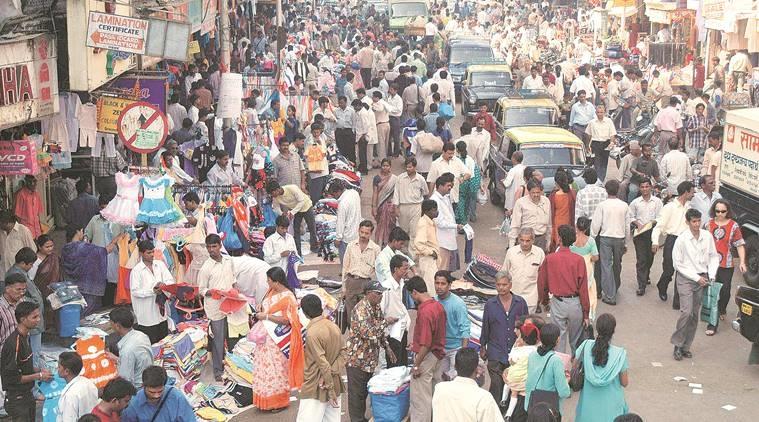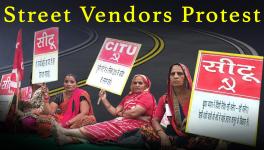Street Vendors Rise In Agitation Across The Country

Image Used For Representation Purpose Only
“We are forced to run from pillar to post to fight for our benefits, despite the implementation of the law,” said a disappointed but determined Irfan, who is coordinating the movement from Delhi.
Your local street vendors are out on the roads, this time not to provide you with services but to demand their most basic right- the right to work. Vendors in Patna held a candle light march to the Gandhi Maidan yesterday alongside multiple protests in the markets across the state. On the 27th, similar protests are scheduled to take place in Ahmedabad.
The street vendors across the two states are being compelled to take their carts off the streets, without any allocation of vending zones. R.K. Tripathi, coordinating the Patna movement on the ground said, “The High Court judge from Ahmedabad, is now transferred to Bihar and is giving orders to take us out of the streets.”
While the two states are witnessing rampant urban development, the street vendors who contribute a significant amount to the Indian informal sector are nothing more than eyesores to the government authorities. Despite a law ensuring their safety being in place, many states are yet to implement it, leaving them vulnerable to harassment, threats and exploitation. The vendors have been suffering for years to get on the right side of the law to assert their rights. In 2010, the Supreme Court declared hawking a fundamental right. However, it was only in 2014, that the Street Vendors (Protection of Livelihood and Regulation of Street Vending) Act, was implemented. The key feature of the Act was that the state governments were required to relocate the street vendors in special vending zones, otherwise, they cannot be moved out of the streets. Currently, in Bihar, Gujarat and in many other parts of the country, the governments have been taking coercive measures and carrying out eviction drives against street vending activities, pushing them to near extinction in the name of de-clogging the city roads for traffic and better urban development. One struggle of the street vendors was to get the law implemented, however, it will prove even more of an uphill journey to get the states to implement the laws that work in favour of the vendors.
The Act of 2014, which was meant to make life easier for street vendors is facing major obstacles in its implementation process, which is costing the street vendors not just economic losses but also anxieties over threats and possibility of harassment in the hands of the police and local politicians. The Act requires local municipal authorities to set up designated vending zones for street vendors, aimed at giving them permanence and to prevent daily harassment. However, few municipalities have implemented it. It also stipulated the formation of a Town Vending Committee with representation from all stakeholders such as street vendors’ associations, municipal corporations and the police. Besides, vendors were to be provided identity cards to regulate the hawking activities in an area.
Pointing out to the flaws in the implementation process, Tripathi adds, “The TVC’s are required to have about 40 per cent representation from the vendors, which can be implemented only after a survey. The city currently has over 30,000-40,000 vendors, however, only 12,000 have been recognised. We are demanding our recognition and we want either the vending zones to be implemented or the roll back of the High Court order.” He explained, the TVC’s have no proper representation from the vendors and they do not function effectively to give a platform to their demands.
Irfan from Delhi confirmed the same about the city, and detailing the problems he said, “Delhi is considered to be doing better than most states when it comes to the formation of rules and committees; in some parts surveys were also taken, but the committee which was supposed to convene its first meeting within 45 days is far away from even being formed as in many municipalities the seats of the vendors remain empty.”
Moving beyond the obstacles at the grassroots level, the Act in its structure also gives enormous powers to the states and the municipalities to draft the rules and to oversee the implementation of the Act. This requirement in some ways defies the purpose of a central legislation. In the absence of a uniform mechanism and no grievance redressal system, the vendors often end up being scared off or easily manipulated by the local authorities which have more bargaining power than them.
Currently, India has the highest population of street vendors in the world at about roughly 10 million, and this number is set to increase as migration from rural to urban areas continues to rise in the wake of the agricultural sector’s collapse. Nearly 56 per cent of India’s GDP comes from the informal sector and street vendors form an integral part of it. Until the government views them as a mere eyesore and not a group that contributes significantly to India’s economy, the implementation of the Act meant to improve their lives will constantly take a hit. Urban town planning needs to step up its efforts to recognize the contribution and space of the vendors amidst rampant development of malls and shopping complexes.
Until then, the vendors have pledged to intensify their agitation and to demand the rollback of anti-vendor measures.
Get the latest reports & analysis with people's perspective on Protests, movements & deep analytical videos, discussions of the current affairs in your Telegram app. Subscribe to NewsClick's Telegram channel & get Real-Time updates on stories, as they get published on our website.
























